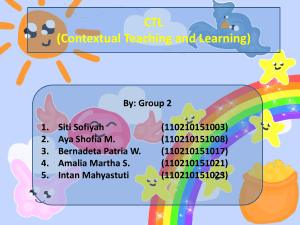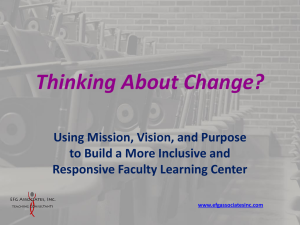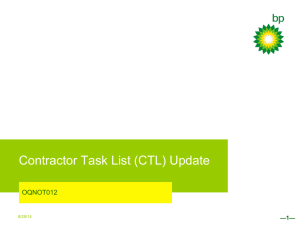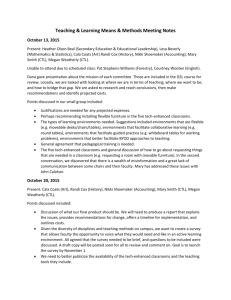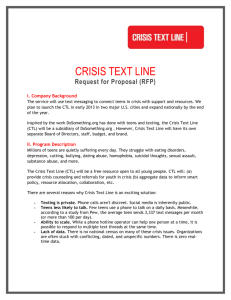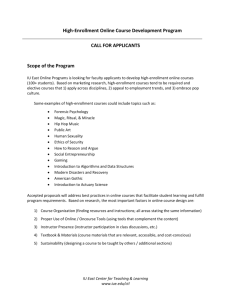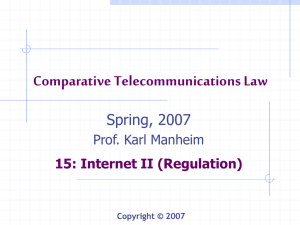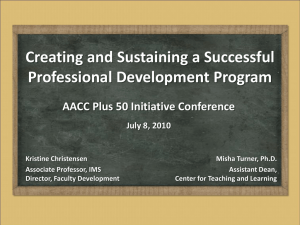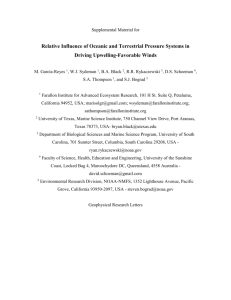Contextual Teaching and Learning: - NC-NET
advertisement
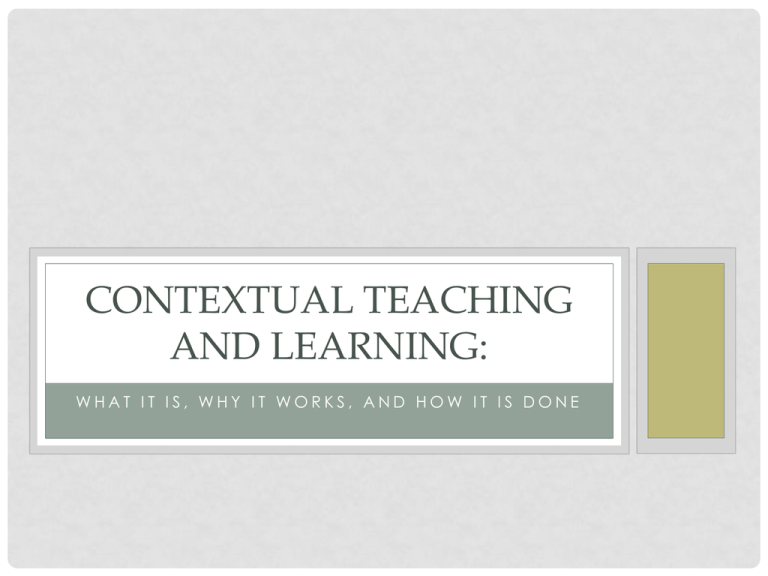
CONTEXTUAL TEACHING AND LEARNING: WHAT IT IS, WHY IT WORKS, AND HOW IT IS DONE CONNECTING CONTENT TO CONTEXT • As defined by Elaine Johnson in her book Contextual Teaching and Learning, contextual teaching and learning (CTL) is “a system of instruction based on the philosophy that students learn when they see meaning in academic material, and they see meaning in schoolwork when they can connect new information with prior knowledge and their own experience” (Johnson, 2002. p. vii). • In other words, CTL aims to enhance student learning by connecting academic content to the context of their personal knowledge, experiences, and interests. • Advocates of CTL assert that connecting academic content to students’ lives leads to enhanced memory and enhanced understanding of the subject matter of any academic discipline. Elaine B. Johnson, Ph.D. THEORETICAL RATIONALE A. Nature is interdependent. Nothing in the universe exists or functions in isolation. B. Because humans live in a world of interdependence, “learning” is essentially the process of discovering how concepts relate to each other. C. If A and B are true, then it can be concluded that the only way new, unfamiliar concepts can truly be understood is by discovering how they relate to old, familiar concepts. D. Therefore, connecting new, unfamiliar academic content to the old, familiar context of students’ knowledge and experiences should enhance their memory and understanding for the things we are trying to teach them. THE COMPATIBILITY OF CTL AND HUMAN BRAIN DEVELOPMENT • Johnson (2002) asserts that CTL is compatible with how the brain naturally develops. • As sensory information about the physical environment reaches the brain, different parts of the brain work together to process the information. New synaptic connections between neurons are formed…thus creating “brain development.” • The more different parts of the brain work together to process information, the more brain development occurs. • Therefore, CTL’s focus on making connections between content and context promotes brain development in a very literal sense! CTL results in a greater number of synaptic connections between neurons. THE EIGHT COMPONENTS OF CTL 1. 2. 3. 4. 5. 6. 7. 8. Making meaningful connections Doing significant work Self-regulated learning Collaborating Critical and creative thinking Nurturing the individual Reaching high standards Using authentic assessment MAKING MEANINGFUL CONNECTIONS • When students see how the content of a course in mathematics, science, history, or literature relates to their own experiences and interests, they begin to find the information meaningful…and this gives them a reason for learning it. • Thus, in addition to its beneficial effects on memory and understanding, CTL enhances motivation. • Examples: a)In a social problems class, students could create a project examining a controversial issue in their community. b)In a psychology class, students could write a paper on their personality, values, and developmental history, with the requirement that they make appropriate connections with concepts from the textbook. DOING SIGNIFICANT WORK • Doing significant work involves doing things that seem important, practical, or useful. • What a student views as significant will be somewhat dependent on that student’s personal goals, values, and interests. • When students view work as significant, they find it more meaningful and are more invested in it. Thus, memory, understanding, and motivation are enhanced. • Examples: a)In a writing class, students could work on creating impressive, professional cover letters and resumes. b)In a business class, students could create and operate a store in which they sell a product to the public. SELF-REGULATED LEARNING • Self-regulated learning involves empowering students to make their own decisions and accept responsibility for them. • In recognition of the fact that different students have different goals, interests, and learning styles, CTL allows students to “customize” their work as opposed to insisting that everybody do exactly the same thing. • Example: Instead of requiring all students in an interpersonal psychology class to write a paper on ways to improve their communication skills, students could develop a project addressing any relevant interpersonal skill. They could present their action plan with a traditional paper, a PowerPoint presentation, or a live demonstration. COLLABORATING Human are social creatures. Research shows that normal human development is dependent on exposure to social interaction during infancy and early childhood, and that the progress of the human species usually requires a group effort. • Conceptual understanding improves significantly when we have the opportunity to discuss academic content with others, compare notes, and build on each other’s ideas. • Therefore, CTL recommends the use of collaboration as a way to add meaning and significance to academic work. • Examples: a) An instructor with a background in social work could collaborate with an instructor with a background in clinical psychology to teach an abnormal psychology class. b) Two or three students in a chemistry class could collaborate to develop a relevant science project. • CRITICAL AND CREATIVE THINKING According to Johnson (2002), “critical thinking is a systematic process that enables students to formulate and evaluate their own beliefs and claims” (p. 101). It allows students to say “This idea is a good one because it is supported by sound reasoning.” • Johnson (2002) describes creative thinking as a characteristic of people who have “the power to imagine possibilities…and to see things that the rest of us overlook” (p. 116). • Critical and creative thinking complement each other, and both can play an important role in CTL. • Examples (both from Johnson, 2002): a) The creative mind designs a costume for the school play, while the critical mind ensures that it is well-made. b) The creative mind discovers a new way to feed the homeless, while the critical mind studies the idea’s feasibility. • NURTURING THE INDIVIDUAL • CTL asserts that all students who have seen the connection between academic content and the context of their personal knowledge, experiences, and interests have a very high potential to learn the subject matter of any academic discipline. • However, helping students achieve this potential requires an understanding of their different backgrounds, knowledge levels, interests, and learning styles. • What enhances memory, understanding, and motivation for one student will not necessarily work for another student. • Therefore, teachers need to take the time to get to know and provide a nurturing environment for every student. REACHING HIGH STANDARDS • In today’s world, nearly half of all available jobs require at least some postsecondary education (Bureau of Labor Statistics, 2007). • Modern American workers need to have good reading skills, good writing skills, good speaking skills, and good computer skills. • Across most professions, employers are looking for people who can think critically and creatively. • Therefore, asking too little of students “reveals a callous disregard for their latent potential and future well-being” (Johnson, 2002, p. 150). • Because CTL enhances student memory, understanding, and motivation, it may be a viable method for “raising the bar” of our expectations for students without creating a significant increase in student dropout rates. USING AUTHENTIC ASSESSMENT Authentic assessment is a way of evaluating students by assessing their ability to apply knowledge and skills to the types of situations that they are likely to encounter in the “real-world” (i.e., outside of the college environment). • Authentic assessment is an appealing alternative to standardized end-of-grade tests or college exit examinations, because unlike those methods, authentic assessment actually requires students to demonstrate that they have the skills necessary to do the things that their jobs will require. • Examples: a) The evaluation of an education student’s performance as a student teacher, or b) The evaluation of a piano student’s performance in a recital. •

